In the culinary world, the chef’s knife stands as a cornerstone of kitchen efficiency and creativity, shaping the way ingredients are presented on the plate. For those tasked with equipping professional kitchens, selecting the optimal chef’s knife transcends mere purchase; it involves understanding the nuances that elevate culinary artistry and streamline preparation tasks. The right knife can drastically reduce prep time while ensuring precision cuts, enhancing not only the aesthetics of dishes but also the overall workflow in a bustling kitchen environment. This selection process, though seemingly straightforward, requires insight into the latest innovations and market offerings to meet the demands of today’s culinary professionals.
Table of Contents
1. Anatomy of chef’s knives: types and purposes
2. 2024 chef’s knife market insights
3. Criteria for knife selection in 2024
4. Top chef’s knives of 2024: models and features
1. Anatomy of chef’s knives: types and purposes
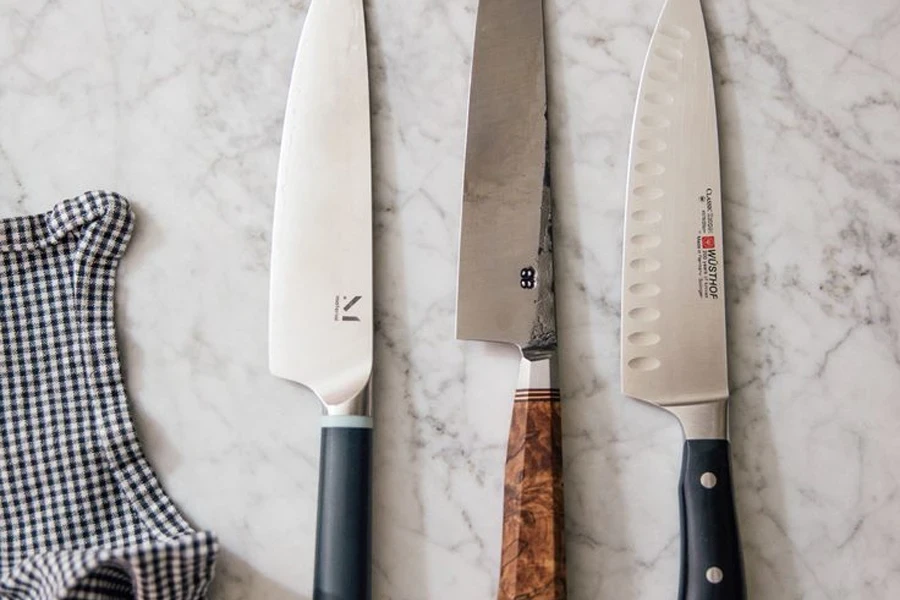
The chef’s knife, an indispensable tool in the culinary world, embodies both tradition and technological advancement, pivotal for professionals striving for precision and efficiency in food preparation. This section explores the intricate anatomy of chef’s knives, their types, and purposes, shedding light on how these instruments cater to diverse culinary tasks.
Blade styles and materials
The blade, the heart of any chef’s knife, comes in two principal styles: Western and Japanese. Western blades, characterized by their robustness and a slight curve towards the tip, facilitate a rocking motion suitable for a variety of chopping tasks. On the other hand, Japanese blades are renowned for their sharpness and precision, with a thinner profile ideal for intricate cuts and slices. The materials used in these blades have evolved, incorporating high-carbon steel for durability and edge retention, and in some cases, layers of Damascus steel for added strength and a distinctive pattern.
Recent advancements in blade engineering have introduced ceramic and laminated materials, offering lightweight options with remarkable edge retention. However, these innovations come with considerations for maintenance and care, as some materials may require specialized sharpening techniques or be more prone to chipping.
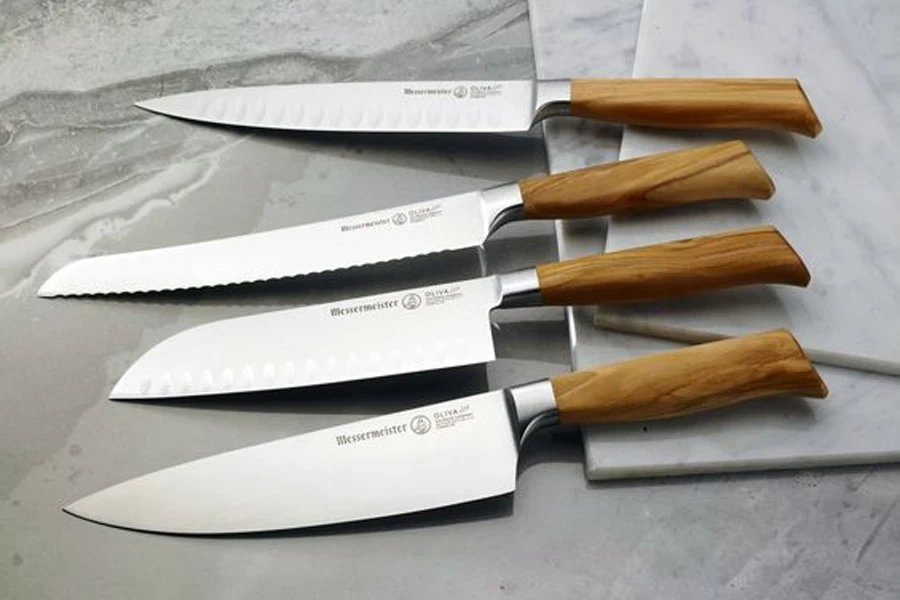
Comfort and versatility in handles
The handle of a chef’s knife is as crucial as the blade, designed for comfort and control during prolonged use. Ergonomic advancements have led to a variety of handle materials, including wood, composite, and metal, each offering different weights and grips to accommodate individual preferences. The shape of the handle and its balance with the blade contribute to the knife’s overall ergonomics, ensuring that professionals can perform repetitive tasks without discomfort.
Handles are now being designed with a focus on reducing hand fatigue and improving grip, even in wet conditions. Innovations such as textured grips and contours aligned with the hand’s natural positions enhance control and precision, making the knife an extension of the chef’s hand.
In the culinary realm, the choice of a chef’s knife transcends simple utility, reflecting a blend of personal technique, cuisine style, and the quest for perfection in every cut. As professionals in the industry explore the vast array of knives available, understanding the nuances of blade styles, materials, and handle ergonomics becomes paramount in selecting the right tool for their culinary artistry. This careful consideration ensures that the knife not only meets the demands of diverse culinary tasks but also complements the chef’s skill, making the preparation process both efficient and enjoyable.
2. 2024 chef’s knife market insights
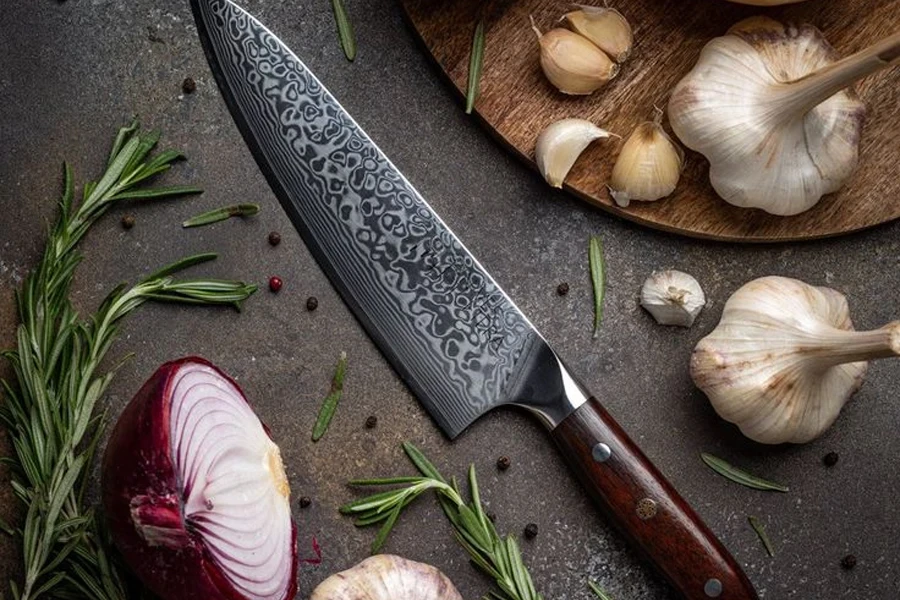
The current market landscape for chef’s knives is marked by a blend of tradition and technological advancement. Manufacturers are increasingly leveraging new materials and design principles to cater to the high standards of culinary professionals, who demand precision, durability, and comfort in their tools of trade.
Experts currently value the global kitchen knives market at US$ 14.5 billion in 2022, and they expect it to reach US $16.5 billion by 2030. They estimate this growth will happen at a 6.3% compound annual growth rate (CAGR) from 2023 to 2030. Another report estimates the global kitchen knife market size reached $1.7 billion in 2023 and is expected to grow to $2.3 billion by 2032, at a CAGR of 3.78%. The European region, accounting for over 40% of the global market revenue in 2022, is expected to dominate the regional market growth over the forecast period, while the Asia-Pacific region is predicted to record the fastest CAGR of 8.0%. The growth of the kitchen knives market is attributed to factors like increasing consumer demand for new and innovative kitchen knives, as well as the rising popularity of high-end and eco-friendly kitchen knife designs. However, challenges such as the easy availability of substitute products and the high cost of importing raw materials could impede growth.
Trends shaping knife selection
Recent trends in the culinary world significantly impact the design and material selection of chef’s knives. The growing emphasis on sustainable practices has seen a surge in the use of recycled and eco-friendly materials, not just in the blades but also in the handles and packaging. Additionally, the fusion of culinary traditions from around the globe has led to a demand for knives that are versatile yet specialized, capable of handling intricate cuts for sushi one moment and robust chopping for hearty vegetables the next. These trends have pushed manufacturers to innovate, creating blades that offer exceptional edge retention and versatility without compromising on the knife’s aesthetic appeal.
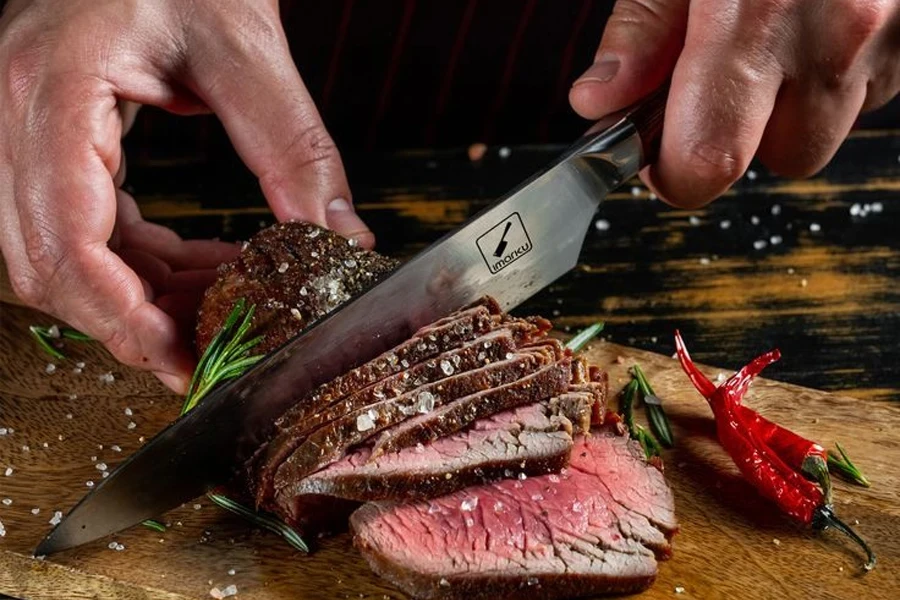
Demand and preference patterns
Understanding the demand and preference patterns is crucial for anyone involved in the procurement and retail of chef’s knives. There has been a noticeable shift towards lightweight yet robust knives, as professionals seek tools that minimize fatigue during long hours in the kitchen. This preference is reflected in the popularity of knives with composite materials that offer the best of both worlds: the sharpness and durability of traditional metals with the comfort and lightweight of modern alloys. Moreover, the demand for customizability has grown, with professionals seeking knives that can be personalized for grip, balance, and blade shape, underscoring the importance of ergonomic design in today’s market.
The insights gleaned from the chef’s knife market in 2024 underscore a period of significant evolution, driven by both the end-users’ sophisticated needs and the broader societal shifts towards sustainability and global culinary integration. As the market continues to adapt, those selecting knives for professional use must remain attuned to these trends, ensuring that their choices align with the cutting-edge of culinary excellence and innovation. This dynamic interplay between tradition and innovation promises to shape the future of the chef’s knife, making it not just a tool, but a testament to the art and science of cooking.
3. Criteria for knife selection in 2024
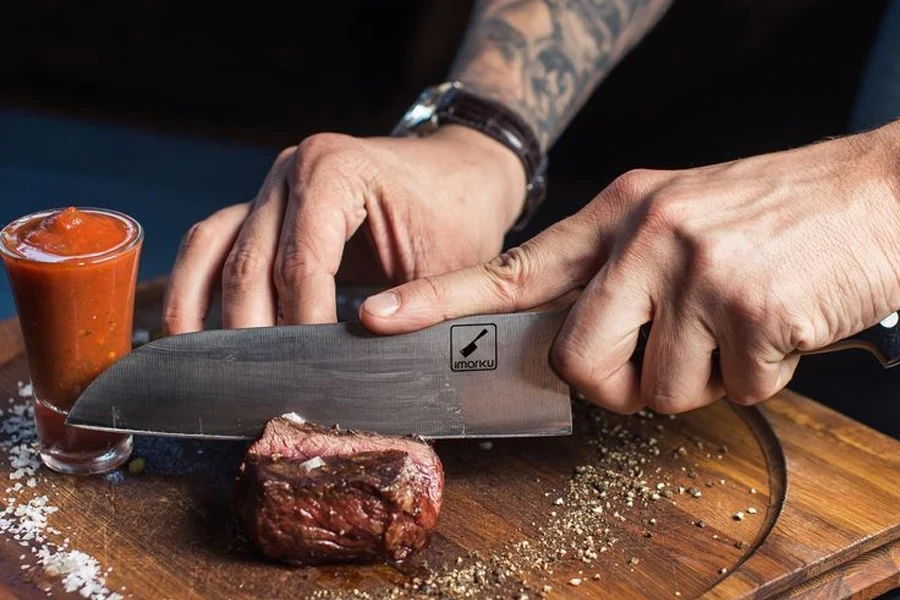
Selecting the ideal chef’s knife in 2024 demands a nuanced understanding of both the technical and ergonomic attributes that define the top-tier tools of the culinary profession. This section delves into the critical criteria to consider, drawn from expert advice and the latest consumer reviews, ensuring that the selection aligns with the rigorous demands of contemporary culinary environments.
Evaluating blade quality and maintenance
The quality of a chef’s knife is predominantly determined by its blade. High-carbon stainless steel remains a preferred choice for its balance between sharpness and ease of maintenance. This material offers exceptional edge retention, reducing the frequency of sharpening and thereby extending the knife’s lifespan. Innovations in blade manufacturing have also introduced treatments and coatings that enhance resistance to corrosion and wear. Maintenance considerations include the knife’s compatibility with standard sharpening tools and techniques, as well as the ease with which it can be cleaned to maintain hygiene standards.
Blade geometry, including the angle of the edge, significantly impacts a knife’s cutting performance and longevity. A more acute angle may offer superior sharpness but requires more frequent maintenance, whereas a slightly obtuse angle sacrifices some degree of sharpness for durability. The choice between these options depends on the specific needs of the culinary professionals and their preferences for maintenance frequency versus immediate performance.
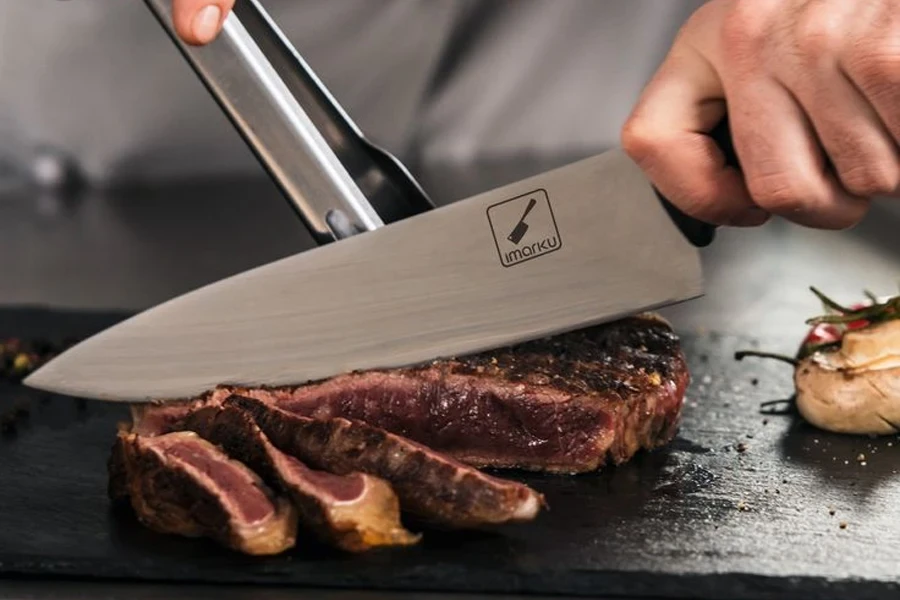
Assessing ergonomics and performance
Ergonomics play a pivotal role in selecting a chef’s knife, with the aim of minimizing fatigue and maximizing control. The handle’s design, material, and balance with the blade contribute to the overall feel of the knife in hand. A well-designed handle accommodates various grip styles and provides stability and control, reducing the risk of accidents and strain during prolonged use. The weight distribution between the blade and handle further influences the knife’s performance, with a well-balanced knife facilitating precision cuts and smooth chopping motions.
The performance of a chef’s knife is also gauged by its versatility across a range of culinary tasks. A knife that excels in slicing delicate vegetables as well as portioning meat is invaluable in a professional kitchen. This versatility is often achieved through a combination of blade length, shape, and the knife’s overall design, allowing culinary professionals to seamlessly transition between tasks.
4. Top chef’s knives of 2024: models and features
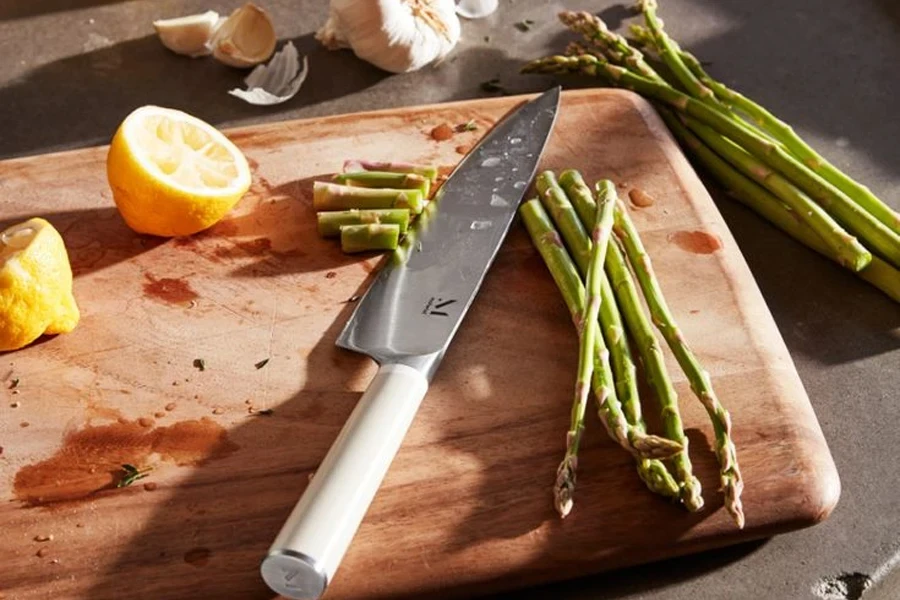
As we advance into 2024, the chef’s knife market is distinguished by a blend of innovation, tradition, and craftsmanship. This section delves into the models and features that define the apex of culinary tools this year, spotlighting the engineering advancements and market leaders that have captured the attention of culinary professionals.
Leading innovations in knife engineering
The forefront of knife engineering in 2024 is marked by significant advancements in materials and design. One of the notable innovations includes the integration of composite materials, offering a unique balance between lightweight construction and unparalleled durability. These materials not only contribute to the blade’s sharpness and longevity but also its resistance to wear and environmental factors. Additionally, ergonomic design has seen a revolutionary step forward, with handles designed to reduce fatigue and enhance grip, catering to prolonged use in professional kitchens.
Manufacturers have also embraced the fusion of traditional forging techniques with modern technology, resulting in blades with exceptional edge retention and ease of maintenance. This synergy between old and new has yielded knives that are both a pleasure to use and highly effective, embodying the craftsmanship valued by culinary professionals while incorporating the precision afforded by contemporary engineering.
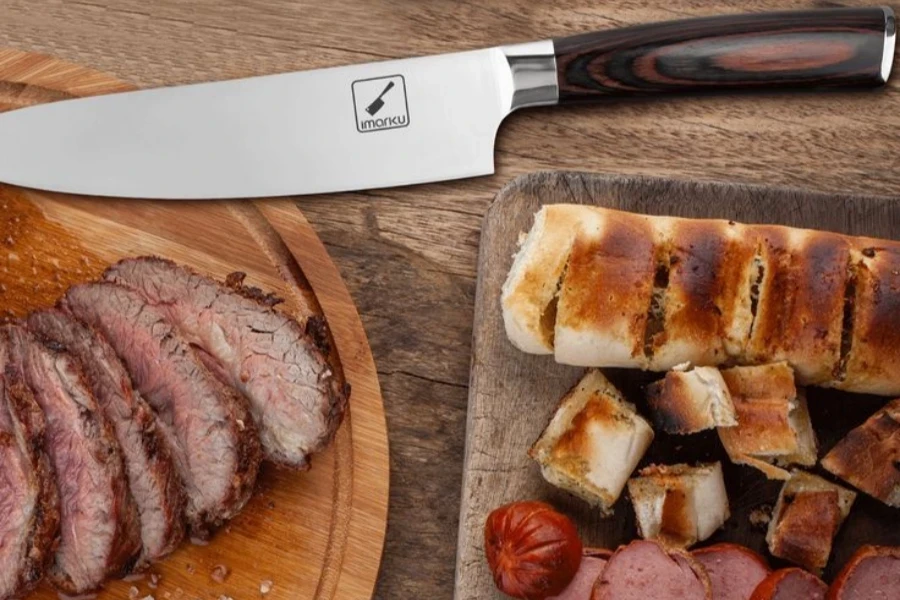
Spotlight on market leaders and their offerings
In the spotlight of 2024’s chef’s knife market are several brands that have consistently set the standard for quality and innovation. Among these, a few have distinguished themselves with offerings that cater specifically to the demands of professional chefs. These brands have introduced models that stand out for their balance, cutting performance, and aesthetic appeal, each with unique features that cater to different culinary needs.
One such model has garnered acclaim for its use of a novel alloy, enhancing the blade’s hardness without compromising its flexibility. This feature ensures that the knife can handle a variety of cutting tasks with ease, from delicate vegetable slicing to more robust butchery work. Another standout model focuses on sustainability, featuring materials sourced from environmentally responsible suppliers and designed for recyclability at the end of its lifecycle, appealing to the growing eco-conscious segment of the culinary industry.
Furthermore, the integration of customizable options has emerged as a key trend, allowing chefs to tailor their knives to specific preferences in weight, balance, and blade shape. This level of personalization ensures that the knife is not just a tool but an extension of the chef’s hand, refined to their exacting standards.
The chef’s knives of 2024 reflect a dynamic convergence of tradition, technological advancement, and user-centered design. As culinary professionals continue to seek tools that enhance their craft, these innovations and market leaders offer a glimpse into the future of kitchen excellence, where performance, sustainability, and personalization converge to redefine the standards of culinary preparation.
Conclusion
Throughout this exploration, the emphasis has been on the nuanced journey of selecting the optimal chef’s knife—a decision that significantly influences culinary artistry and kitchen efficiency. By delving into blade innovation, ergonomic advancements, and the standout models of 2024, the discussion underscored the importance of aligning knife choice with professional demands. This informed selection process is pivotal, ensuring culinary professionals are equipped with tools that not only meet but elevate their culinary endeavors, blending tradition with cutting-edge technology to redefine the essence of cooking.



